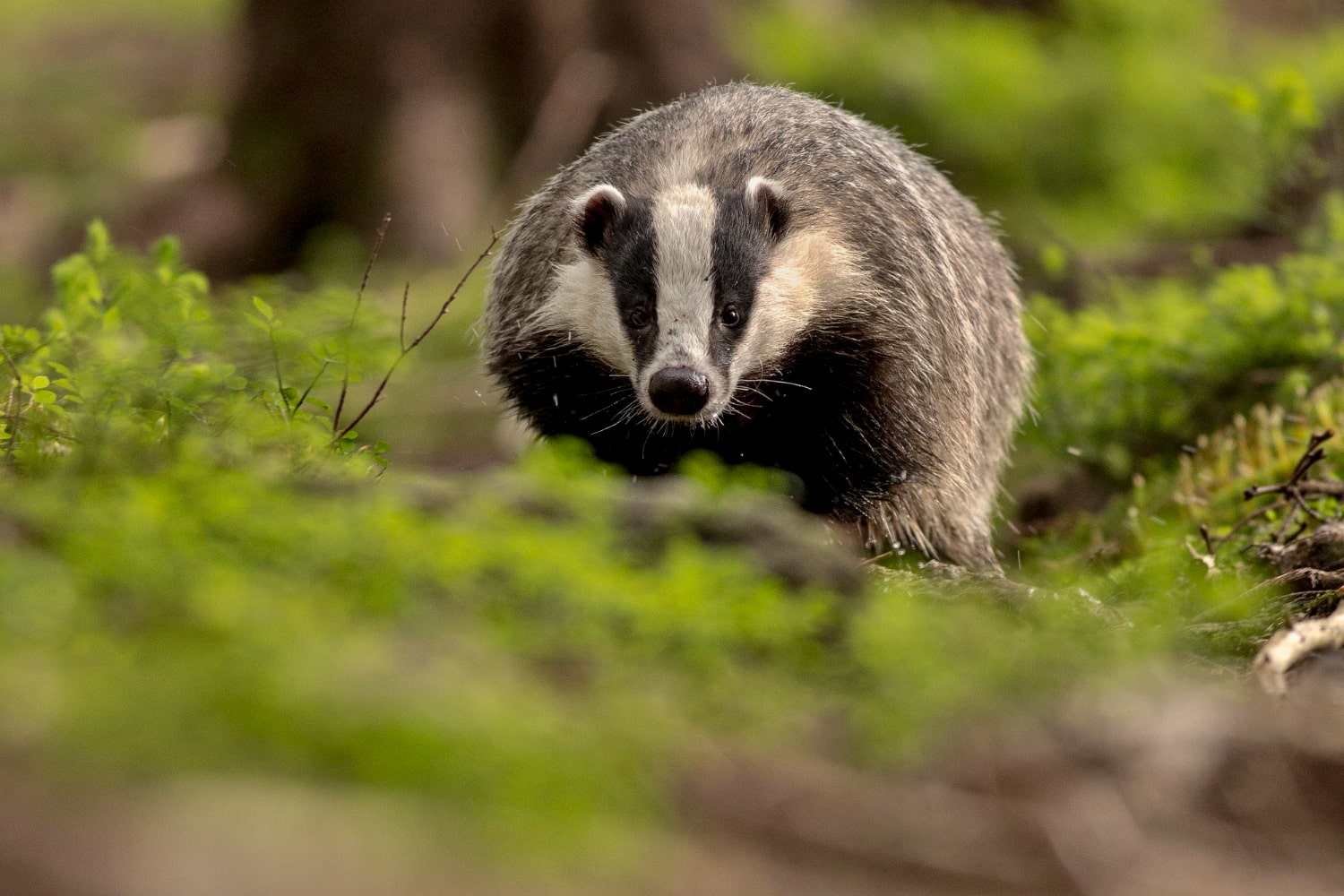Badgers are animals that rarely appear in plain sight, yet they play a very important role in the ecosystem. Their distinctive black-and-white facial markings make them easy to recognize, but behind this simple appearance lies a complex lifestyle and incredible adaptability. Badgers are nocturnal, build intricate burrows, and help maintain environmental cleanliness. They are tough, intelligent, and remarkably hygienic creatures. Here are some fascinating facts about badgers you may not have known.
- Badgers belong to the mustelid family and are related to otters, weasels, and martens. Compared to their relatives, they are much more robust and powerful. Their bodies are well adapted for digging, with strong limbs and long claws. Badgers can even dig through stony or compact soil.
- One of the most well-known features of badgers is their complex underground homes called setts. These consist of multiple tunnels and chambers used for sleeping, resting, and raising young. Some setts are used by generations and can extend up to 100 meters in length. They even include natural ventilation shafts.
- Badgers are very clean animals. They avoid defecating near their setts and instead dig special latrine pits at a distance. They also regularly clean out food remains and other debris from their homes. This behavior reduces the risk of parasites and disease.
- A badger’s diet is based primarily on earthworms, which it can sniff out and dig up even under leaves. It also eats insects, small vertebrates, berries, mushrooms, and grains. Badgers are known to attack wasp nests and eat larvae despite being stung. This makes them important for controlling pest populations.
- Badgers are mostly active at night. During the day, they stay hidden in their burrows and emerge only after dark to search for food. Their eyesight is poor, but they have an excellent sense of smell and hearing. These senses allow them to navigate in complete darkness.
- Despite their bulky bodies, badgers can run surprisingly fast. They can reach speeds of up to 30 kilometers per hour over short distances. Their bodies are flexible, and their legs are extremely strong. This helps them escape predators and defend their territory.
- Badgers are monogamous animals and often form long-term pairs. A sett is often home to a breeding pair, their offspring, and sometimes even related individuals. This social structure helps defend the burrow and enables knowledge-sharing among group members. Some setts are shared by multiple families.
- In colder regions, badgers go into a light form of winter dormancy. They do not hibernate as deeply as bears but occasionally wake and change position. They begin preparing in autumn by building up fat reserves. Their body weight can double before winter.
- Badger fur was historically used to make brushes and even shoes. It is durable, shiny, and holds its shape well. Today, its use has declined due to ecological and ethical concerns. In some areas, badgers are protected and listed in conservation registers.
- Badgers are capable of defending themselves effectively using their teeth, claws, and powerful bite. When cornered, they can put up fierce resistance. There are documented cases of badgers fighting off dogs or even foxes. They are brave and highly resilient animals.
- Badger cubs are usually born in winter, typically in January or February. A litter consists of two to six young. For the first few weeks, they remain entirely dependent on their mother and stay inside the sett. In spring, they begin to explore their surroundings.
- Badgers are territorial animals and mark the boundaries of their range with scent. They use special scent glands to rub on bushes, stones, and other landmarks. This signals to other badgers that the area is occupied. It helps to reduce conflicts and conserve energy.
- In the United Kingdom, badgers are legally protected, and killing them without permission is prohibited. However, because they can carry bovine tuberculosis, controlled culling is sometimes carried out in livestock areas. This creates tension between farmers and wildlife advocates. Managing badger populations remains a topic of ecological and political debate.
Badgers are truly fascinating animals with unique behavior, anatomy, and social structure. They play a key role in nature, even though they are rarely seen by people. These incredible facts about badgers help us better understand their importance and why they should be protected. Learning more about them enriches our appreciation for the diversity and complexity of the natural world.





